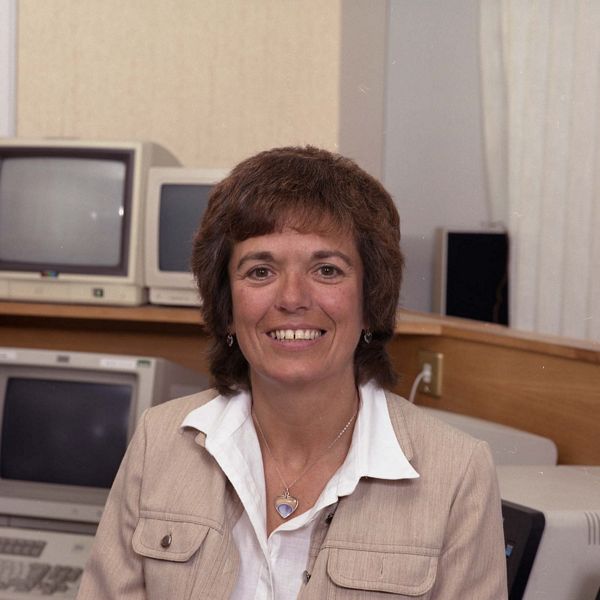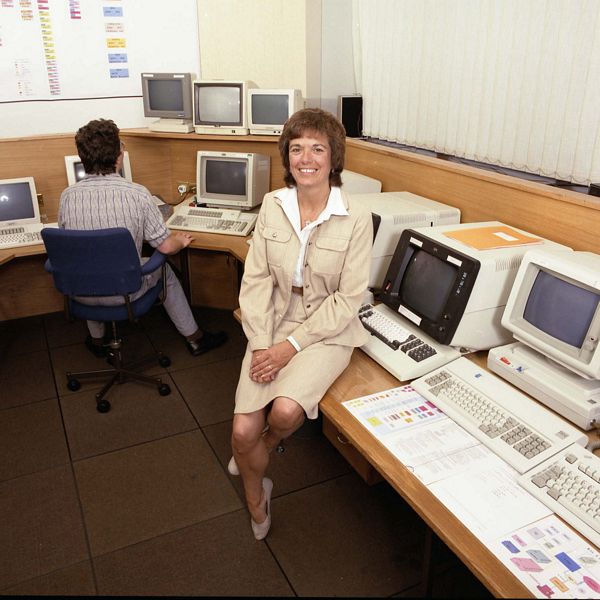

The dramatic Stop Press in the last issue announced that the Council had revised its charging arrangements. This is good news for users who are constrained by their existing allocations. This article explains the changes made by the Council and looks at their practical implications.
As most users will be aware, the current arrangements involve each Board committing annually to buy an amount of computing to match its estimated needs. The Board then allocates this to its various scientific programmes and to users supported by Research Grants. If a firm commitment is made at the start of the financial year the Board attracts a 20% bonus.
This method of funding has two adverse implications on the provision of a large computing service. Firstly, it allows the Boards to vary their contributions from year to year thus making it difficult for us to plan for the growth of the service and the replacement of obsolete equipment. Secondly, it puts an upper limit on the amount of work a Board's users can run and, in theory, it is possible to have the machine standing idle for the latter part of the year because all allocations have been exhausted. A third problem has been that the CRAY supercomputer run for the joint Research Councils is administered as a charge-free service and thus creates anomalies.
To overcome these problems the Council has accepted the following proposals:
What do these changes mean in practice? Firstly, they mean that we should be able to be much more flexible in responding to users demands. They also mean that we should not have to consider running an idle machine. They do not mean, however, that any of the existing procedures for authorisation to use the system will disappear; peer review is still the key to SERC's allocation of its facilities.
We aim over the next few months to review the way in which we do allocation and control with a view to simplifying the system as far as possible while increasing flexibility to the user. One possibility being examined is that we introduce on the IBM system the concept of priority zero which we currently use on the CRAY. This would enable an authorised user to make use of a large amount of low priority time, when it is available, in addition to his formal allocation.
The changes mean that Category Representatives can afford to relax the limits which they are currently imposing on their groups of users. Already High Energy-Physics is taking advantage of this to enable users to submit work during the current quiet period. If your allocation is a problem then do contact your Category Representative or Sue Ward of Resource Management (ID = SHW).
By the time you read this article Central Computing Department will have said goodbye to two long-serving staff members. Doug House and Ann Cox have between them forty five years of service at RAL.
Doug House joined the Atlas Computer Laboratory, as it was then, in 1964 to take on responsibility for operation of the Atlas 1 computer. Doug came to us after working on underwater blasts at the Admiralty Mining Establishment and spending some time at GCHQ.


The Atlas computer provided a first-rate national service for many years and Doug's harem of bright young ladies who prepared data and operated the system played a large part in gaining the Laboratory its excellent reputation.
Since those days Doug has been responsible for installing a total of 13 mainframe computers at RAL including the ICLl906A, a Univac 1108, reinstallation of two IBM 360/195s and two CRAYs. In addition to this he has been consulted over machine installation at other SERC establishments. It is to his credit that these changes have been carried out with meticulous planning and little adverse effect on our users.
Doug will be remembered for the way he has firmly supported his staff and for his readiness to talk tough with suppliers when the need arose. He leaves the Atlas Centre in good shape to regain the role it had in those early days.
Ann Cox came to us after training as a hotel receptionist - skills which she has put to considerable use in her time in Operations. Ann has the ability to remain unflappable in any crisis and has got on well with everybody from senior management to the most junior user.


Over the years we have come to respect her technical skill and her grasp of the black art of keeping the system running. Since being appointed Operations Supervisor she seems to have spent more time under the machine room floor than above it, emerging occasionally, screwdriver in hand, to issue instructions!
Ann's blend of technical skill and friendliness, together with her twenty years of experience, will be hard to replace.
X.400 is the CCITT defined protocol for electronic mail. originally published in 1984. It uses the term Management Domain (MD) for a collection of mail systems operated by an organisation. X.400 defines the interconnection between Administration Management Domains (ADMDs), operated by public telecommunication providers (strictly by RPOAs), and Private Management Domains (PRMDs), operated by anyone else.
The Academic Community's Transition Report (the White Book) identified the ISO Standard as its target for electronic mail. Apart from the greater maturity of the standard and the fact that it makes proper use of the Presentation Layer, the principal features of most use to the UK Academic Community in ISO 10021 and not contained in X.400(84) are:
Development of a converter between Grey Book Mail and ISO 10021 is already in progress at UCL and due for completion before mid-1989. It is intended that a detailed Operational Requirement for ISO 10021 for the community will be developed this autumn. so that it can be issued (allowing ISO 10021 as an alternative to Grey Book) as soon as MOTIS achieves full International Standard status. provided the mail converter and NRS OSI developments keep to target timescales.
Addressing message recipients is very different from the Grey Book format in ISO I0021/X.400. A structured address called an O/R Address consists of a number of attributes and their values. In order that X.400 users can communicate with Grey Book users. the Grey Book users will need to know how to express their own address in X.400 attributes, and should be encouraged now to start giving their mail address in both formats on, for example, their business cards.
Grey Book systems are strongly encouraged to support the format of local-part (left of the (g:) consisting of Initials separated by dots followed by Surname which is recommended in Mailgroup Note 5, as this will give their users more logical O/R Addresses.
To obtain the O/R Address for a Grey Book user in UK AC, the first three attributes are:
Then use the Standard Form NRS name to generate:
Then use the local-part (left of @) to form the Personal Name which consists of:
Some examples may help to illustrate the possibilities and give a suggested layout for business cards etc:
Electronic Mail
Grey Book: J.A.I.Craigie@uk.ac.rutherford
ISO 10021/X.400:
Country GB
ADMD Gold 400
PRMD UK.AC
Organisation Rutherford
Surname Craigie
Initials JAI
Electronic Mail
Grey Book: Black@uk.ac.oxford.physics.vax
ISO 10021 /X.400:
Country GB
ADMD Gold 400
PRMD UK.AC
Organisation Oxford
Org-Unit Physics
Org-Unit Vax
Surname Black
Electronic Mail
Grey Book: Shirley.Wood@uk.ac.rutherford.gec-b
ISO 10021 /X.400:
Country GB
ADMD Gold 400
PRMD UK.AC
Organisation Rutherford
Org-Unit GEC-B
Surname Wood
Given-name Shirley
This article is selected extracts from an article by Jim Craigie published in Network News 26 (ISSN 0954-0636). The Network News article also contains information on tracking gateways and the availability of X. 400 ( 84) services. If you would like to obtain copies of back numbers of Network News or to be included on the mailing list for future issues, please contact the JNT Secretary: Susan Fuller
The eighteenth meeting of the VAX (VMS) User Group was held at the Royal Society in London on Wednesday, July 13.
During the morning's business Paul Thompson presented a proposed update to the Group's terms of reference, mainly occasioned by the disappearance of the User Liaison Committee. As reported previously the presence of Paul himself at VUG meetings, as well as that of Paul Bryant, should provide adequate communication channels in lieu of the ULC.
Peter Chiu gave the VAX Networking status report. It was noted that the bulk purchase of "Pink Book" software organised through the JNT had now been completed. Some concern was expressed over how promptly new releases of PSI and CBS software (needed for JANET communication) would be available after the distribution of Version 5 of the VMS Operating system. Both Mike Waters (from the RAL support team) and Bob Cranfield (the VUG chairman) agreed to follow up this important issue with DEC.
The last item that Peter had to report was that Sue Weston had left the support team to work for the JNT. The VUG members took this opportunity to record their thanks for Sue's past efforts on their behalf and to wish her well.
The main discussion topic of the meeting was (once again) central support for VAX (VMS) users, and the news of Sue's departure made this item particularly timely. The focus of the discussion this time was the resolution of priorities for support. In previous sessions members had been essentially unanimous on the need for increased support. The problem, with so many different application areas represented by the VUG membership, was achieving a consensus on the kinds of new support that are most urgently required. In view of this the chairman had circulated members with a questionnaire on their support priorities. Replies had been received from most members and were used as the basis of discussion, both of requirements and the feasibility of meeting them. The chairman has agreed to draft a letter to Paul Thompson presenting the conclusions of this discussion, and it is hoped that once this draft has been approved by the other VUG members a report will be carried in a subsequent issue of FORUM. It is safe to say, however, that members see the continuation of the level of Wide Area Networking support provided up until now as the highest priority, and regard it as imperative that a replacement for Sue Weston be found without delay.
The support theme was earned on into the afternoon's presentations with Chris Osland describing the new arrangements for VAX graphics support. A new member of the RAL graphics team has been recruited to help provide VAX expertise and a total of one person equivalent is now promised for VAX systems. This effort will probably be largely devoted to RAL GKS, but an arrangement has been made for RAL Data Handling Division to provide cover and representation for members of the HEP community who are more likely to use the GTS-GRAL flavour of GKS.
The second presentation of the afternoon, and the last of the day, was by the performance-enhancement specialists, UIS. They described their range of VMS software, including disk-optimisation, archiving, automated system management, and even a RAM-disk utility, though some of us found the concept of a RAM-disk for a virtual-memory operating system novel to say the least!
The COSINE (Cooperation for OSI Networking in Europe) Project was adopted as a part of the Eureka programme at the 2nd Eureka Ministerial Conference in Hanover in November 1985. The objective of the project is to provide the European academic and industrial research community with a computer based open communications infrastructure. In COSINE, all Western European countries, the European Commission and Yugoslavia participate. Therefore, COSINE is the "most European" project in Eureka.
The first intention of COSINE is rapid establishment of an environment to make data communication services available to users from both academic and industrial research organisations. These services will:
The COSINE project has reached an important stage. Recently the first part of the project, the specification phase, was concluded. The specification phase was executed by RARE, the European association of research networks and their users. RARE set up a detailed plan for this work, the execution of which involved specialists from all over Europe, from consultancy bureaux, individual consultants, software houses, universities and. of course, the RARE Working Groups. Areas covered by the specification phase are: user requirements evaluation, selection of urgently needed and possible future services, evaluation of present and planned public data communication services, examination of operational requirements and migration strategies. The specification phase provides a "blue print" for the next phase of the COSINE project, the implementation phase. The results of the specification phase will be published this autumn. The first detailed technical reports are already available.
In January 1989 the three-year COSINE implementation phase should start. The main organisational structures have already been designed. A large part of the activities between 1989 and 1991 will take place at a national level. For activities at a European scale, a COSINE Project Management Unit will be established. Proposals for this CPMU are being prepared at this moment. The total costs of the international activities within the implementation phase will amount to some £35 millions. For developments at national and local level the expenditures of the various countries will probably exceed £300 millions, according to estimates from the COSINE Policy Group.
In June this year, the Eureka ministerial conference in Copenhagen already expressed its support for the further execution of the COSINE project. The Eureka ministers promised to promote the availability of the necessary finance in their own country. The final decisions on the content, organisation and financing of the implementation phase of COSINE will be taken towards the end of this year.
This article was kindly supplied by the RARE Secretariat.